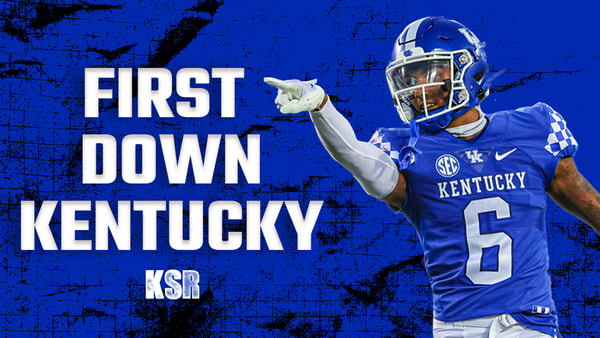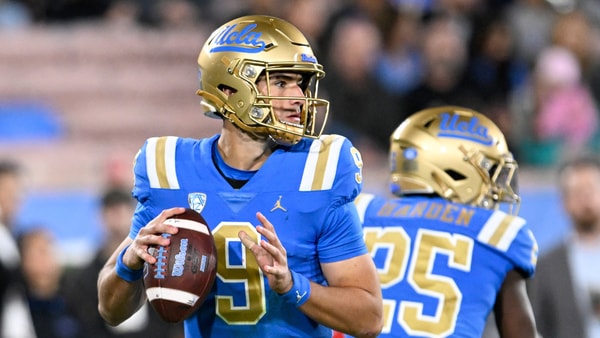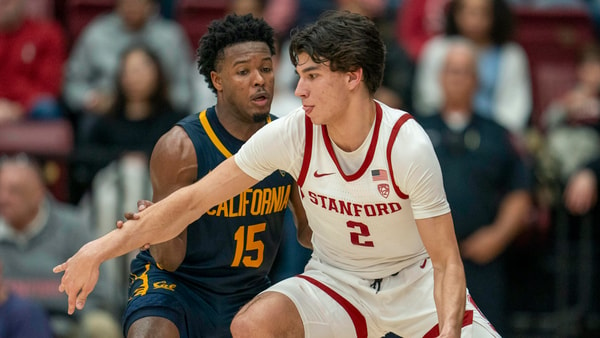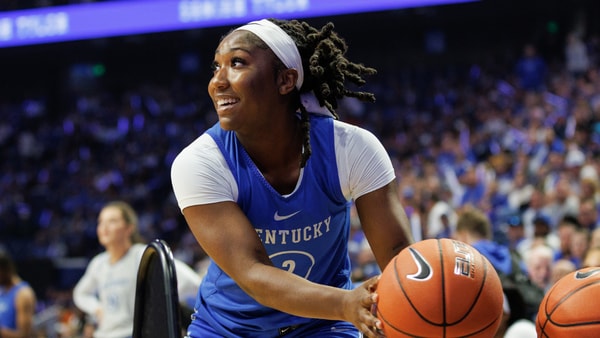Advanced Stats Glossary: 13 terms to know for football season
Welcome to football season, friends. On Saturday, we get live college football games on the tube highlighted by a Big Ten showdown between Nebraska and Northwestern in Ireland. The best sport in the world is officially back.
Over the next three months, we will be diving into the weeds with Kentucky football. Whether its analyzing personnel, reporting news, or doing deep dives on opponents. Through it all, there are some keywords that some folks might not be familiar with.
As the resident leader of KSR’s football analytics department, I have had a few folks ask me what “success rate” means and if I could define some of the terms than be found in my writing or on the 11 Personnel podcast.
Now feels like a good time to put that list together. Here are 13 phrases that will be used often throughout the football season. Let’s nerd out for a moment.
— Success Rate: The best efficiency measure running, in my opinion. Success rate grades snaps on a play-by-play basis as a success or failure. For a play to be deemed a success, an offense must gain 50% of needed yardage on first down, 70% of needed yardage on second down, and 100% of needed yardage on third or fourth down. Kentucky ranked No. 5 nationally in success rate (51%) last year powered by a strong rushing attack and efficient passing game.
— Yards Per Play: Instead of using total yardage, yards per play measures every play and tells you who is the best on a snap-by-snap basis by averaging the total yardage game over total plays. Yards Per Play can be an effective explosiveness measure.
— Points Per Scoring Opportunity: Red zone is a term that everyone loves to use, but some times it does not tell an entire story. Points per scoring opportunity does a better job of calculating how teams finish drives. A scoring opportunity is created when an offense has the football inside their opponents’ 40. Therefore, the offense is just one first down away from realistic field goal range while also being in no man’s land when it comes to punting. In 2018, Kentucky’s defense ranked No. 8 nationally (3.52) in this metric as the Wildcats gave up some yards but really tightened the screws when it came time to get stops where it mattered most.
— Points Per Drive: A simple measure that tells you how many points an offense scores or a defense allows per possession. Points per drive is a more effective stat than scoring offense as it helps separate teams that shorten the game like Kentucky from teams that use tempo as a weapon. Last year, Kentucky ranked No. 15 points per drive (2.94) and Tennessee ranked No. 17 (2.92). However, the Vols averaged seven more points per game due to increased possessions. This metric helps separate the two.
— Explosive Play: Not every play is the same. To separate, there is a way to classify an explosive plays. This is done multiple different ways by others, but I use 10-plus yards on a running play and 15-plus yards on a pass play to categorize explosive gains. Those offenses who may fall behind in success rate must create a lot of explosive plays to put points on the board.
— Havoc: The defense gets to have some fun as well. A havoc play can be characterized by any snap that represents something positive the defense did in the stat sheet. Tackles for loss, sacks, interceptions, forced fumbles, and pass breakups are all considered havoc plays. The defenses with the best havoc rate are usually are among the top units in the country.
— Catch Rate: How do you grade receiving efficiency? One was is to record who just simply catches the ball. Catch rate is the percent of times a receiver records a reception when targeted on a pass.
— Close Game Record: Football is a game of inches. Records in one-possession games (8 points or less) can tell us who is the best at managing games during crunch time. Mark Stoops is 12-5 in one-possession games over the last four years as Kentucky is 33-17 overall. Scott Frost is 5-20 in close games over that same time with a 15-29 overall record. In a small sample size sport with some tiny margins, those who manage close games the best have the best long-term success.
— Run Play Percentage/Pass Play Percentage: The amount of times a team runs or throws the ball over all of their snaps. The statistic gives us a good idea of what to expect of any team when heading into a game. Mississippi State ranked No. 1 nationally in pass play percentage (73.1%) last season.
— Sack Rate: Similar to scoring, the total numbers in sacks are not a fair way to judge a pass rush. Some teams throw the ball 40 times per game and others hover around 20. Therefore, a single sack against the latter does not have as much significance as one against the former. Sack rate helps quantify this by accumulating the total numbers of sacks with the total numbers on pass attempts per game. Last year, Hendon Hooker ranked last in the SEC in sack rate (10.4%). Emory Jones (3.1%) led the league.
— Touchback Rate: The amount of kickoffs that end in a touchback. This number has skyrocketed since rule changes move the ball up and allowed teams to fair catch to get the ball at their own 25. Touchback rate tells us how effective a kicker is and if teams value put any value in their return game.
—aDOT: Yards per attempt is a passing measure that calculates how many yards a quarterback average per throw. However, it does not take into account on far each throw went. Average depth of target (aDOT) does that to help separate the dink and dunk throwers from those who swing for home runs in the vertical game.
— EPA: The most popular advanced stat on the college football block currently is expected points added (EPA). Essentially, this measures the difference of expected points before the play and after play. Thanks to an advanced algorithm, we know what the expected points can be from anywhere on the field with the down and distance thrown into the equation. EPA helps measure how many points a team is adding on a per snap basis. EPA is the best combination of efficiency and explosiveness in the analytics world. Expect to hear this term used more often.








Discuss This Article
Comments have moved.
Join the conversation and talk about this article and all things Kentucky Sports in the new KSR Message Board.
KSBoard